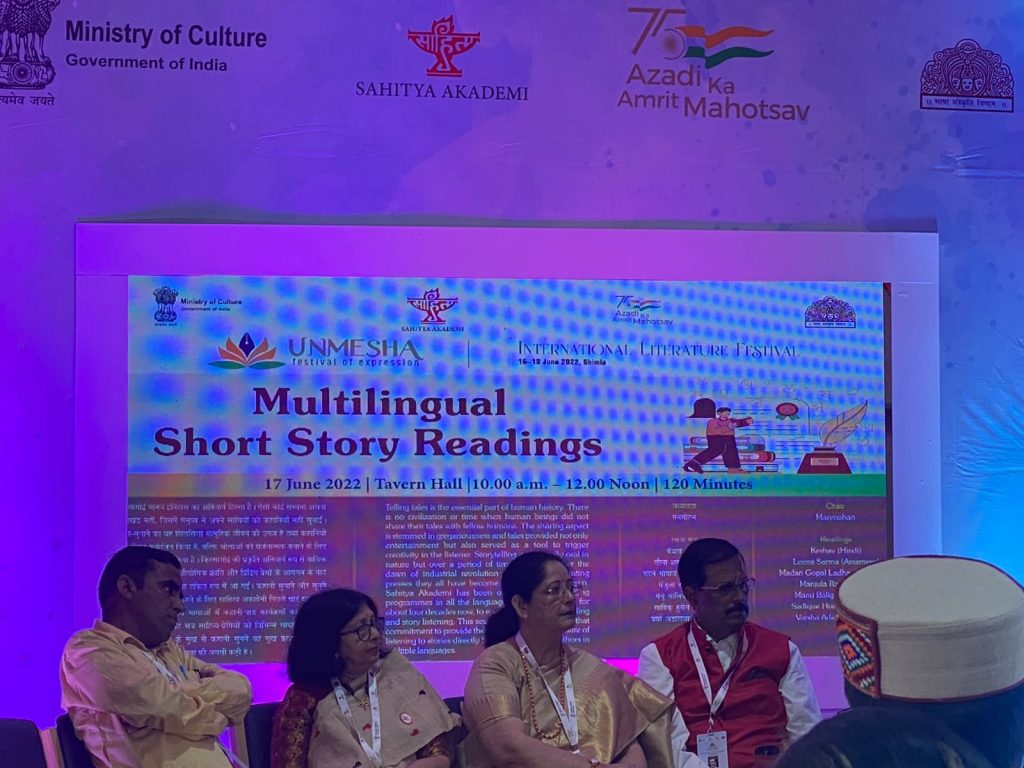A discussion on Multilingual Short Story Readings was chaired by Shriniwas Joshi and readings and adopted language were Rajnikant, Himachali-Pahadi; Sahana Vijayakumar, Kannada; Shelly Kiran, Kangri; Surat Thakur, Himachali-Kullavi; Suresh Sundaresan, English, while the second session was chaired Manmohan and readings in adopted languages were done Keshav, Hindi; Lena Sarma, Assamese; Madan Gopal Ladha, Rajasthani; Manjula Rana, Hindi; Manu Baligar, Kannada; Sadique Hossain, Bengali; Varsha Adalja, Gujarati.

The sessions featured writers from different states who shared their stories in their native language and also translated versions were read. The themes covered were diverse and the cultural exchange of practices of different communities and the journey and life of many writers involved was presented through their stories as well. Multilingual recitals enable different types of audiences to enjoy the session as these cater to the needs of different types of literature enthusiasts.
A discussion on Literary Classics of the World & Indian Writings was chaired by Namita Gokhale and the discussants were Nirmal Kant Bhattacharjee, Paul Zacharia, Rana Nayar and Srinath Perur. The panellist believed that Indian writings are also world classics so the distinction was unfair, but other than that Indian writings have contributed greatly to world literature and vice-versa. The reason we can establish connections with foreign societies is because of the literary evidence that remains to date. The classics are said to be immortal because of their impact irrespective of age, they always inspired individuals in new ways. The classics have become the very foundations of our understanding of literature and the standard of good literature.
Many are considered revolutionary stories while some are considered moral stories that have been part of the speeches of many decorated individuals. Similarly, world classics have had a great influence on Indian writers thus Indian literature is heavily inspired by influences of foreign literature. Many Indian artists have borrowed ideas from foreign literature and combined it with local elements to portray stories that have in turn become classics, thus classics remain timeless.
They evolve and take up shape that is desired by different writers but it stays true to the ideas it was born with and it simply is reused in the new writings. Classic literature readings and understanding are quite difficult and thus feared by students, but for the literature enthusiasm, they are an interesting journey which is full of difficult obstacles that are never impossible to overcome. The journey is such that you read the classic several times but at the end is reading on a very satisfying note.
The panellists collectively believed that classics have attained status and fame because they have passed through the eyes of many literature enthusiasts who have enjoyed the struggle of reading the classics and have achieved the satisfaction through which they can continue being enthusiastic about the literature.





